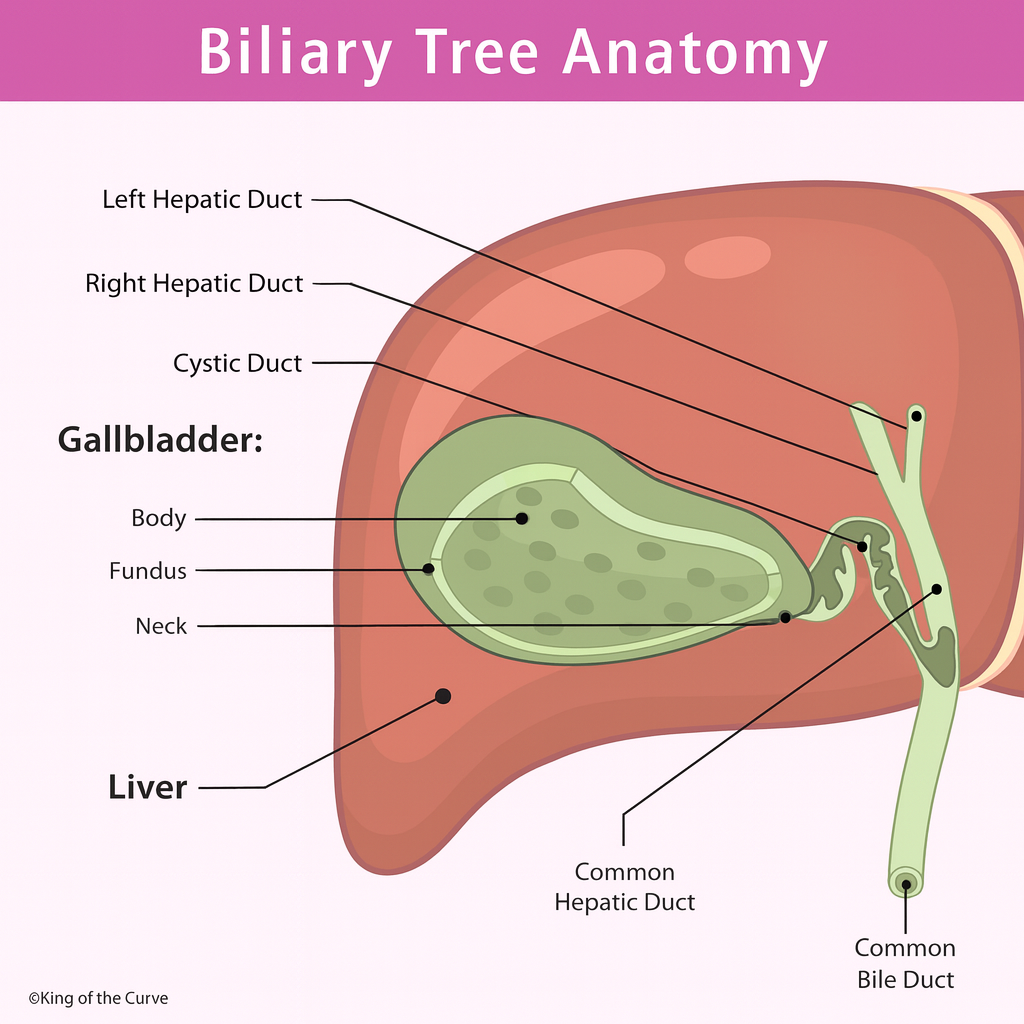🩺 Biliary Tree Anatomy: Structure & Function Explained
Understanding the biliary tree is crucial for comprehending how bile is produced, stored, and transported within the body. This anatomical network plays an essential role in digestion—especially in the breakdown and absorption of dietary fats.
📍 What Is the Biliary Tree?
The biliary tree refers to the network of ducts that transport bile from the liver and gallbladder to the duodenum (the first segment of the small intestine). Bile is vital for emulsifying fats and facilitating their absorption by the intestinal lining.
🧠 Key Components of the Biliary Tree (as shown in the image)
1. Liver
The liver is the primary organ that produces bile. Hepatocytes (liver cells) continuously secrete bile, which then drains into tiny canaliculi and eventually into larger ducts.
2. Right and Left Hepatic Ducts
These ducts drain bile from the respective lobes of the liver.
Right Hepatic Duct drains the right lobe
Left Hepatic Duct drains the left lobe
They converge to form the common hepatic duct.
3. Common Hepatic Duct
This is the main conduit for bile exiting the liver. It acts as a critical junction where liver bile can either:
Continue into the common bile duct, or
Be diverted via the cystic duct into the gallbladder for storage
4. Gallbladder
A muscular sac that stores and concentrates bile between meals.
Fundus: Rounded end of the gallbladder
Body: Main storage region
Neck: Narrows into the cystic duct
During digestion (especially after eating fatty meals), the gallbladder contracts to release bile into the common bile duct.
5. Cystic Duct
Connects the gallbladder to the common hepatic duct, allowing bile to flow:
Into the gallbladder (for storage)
Out of the gallbladder (for digestion)
6. Common Bile Duct
Formed by the union of the common hepatic duct and the cystic duct. It delivers bile into the duodenum, aiding in the digestion of fats.
🧪 Clinical Relevance
Understanding biliary anatomy is vital for diagnosing and treating:
Gallstones (Cholelithiasis)
Biliary Obstruction
Cholecystitis (inflammation of the gallbladder)
Bile duct cancers (Cholangiocarcinoma)
Post-cholecystectomy complications
🔍 Summary
| Structure | Function |
|---|---|
| Liver | Bile production |
| Hepatic Ducts | Drain bile from liver lobes |
| Gallbladder | Stores and concentrates bile |
| Cystic Duct | Connects gallbladder to biliary tree |
| Common Bile Duct | Delivers bile to the duodenum |
📚 Final Note
The biliary tree is a vital anatomical and physiological component of the digestive system. Disruptions in its flow can lead to serious medical conditions. A solid grasp of its anatomy enhances understanding for students, clinicians, and healthcare professionals alike.
Frequently Asked Questions (FAQs)
-
Aim for 4-6 focused hours, ensuring you incorporate breaks to avoid burnout.
-
Practice mindfulness techniques, take practice exams under realistic conditions, and maintain a balanced lifestyle.
-
Set short-term goals, seek support from mentors, and reward yourself for small achievements.
-
Regular exercise improves focus, reduces stress, and enhances overall mental clarity.
-
KOTC offers personalized learning tools, gamification features, and adaptive question banks to help students stay on track without burnout.


